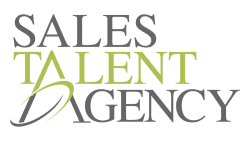BY STEFAN KARPOWICZ
If you’ve had a job in a sales capacity throughout your career, you’ve probably been faced with the task of making an unsolicited phone call to a prospective customer. This is also known as cold calling, a scary term to find on any job description. Luckily, it doesn’t have to be feared. As salespeople, we are always looking for ways to generate new leads and despite popular belief, cold calling is still a very effective way of prospecting when done with conviction. So, why are the conversion rates so hopelessly low for salespeople who use cold calling as a prospecting tactic? We sat down with Dan Manojlovic, Business Development Manager at Sales Talent Agency, to look deeper into why salespeople fail to generate new leads via cold calling and uncover best practices to maximize their cold calling efforts to improve lead generation. Below are his 5 tips to help improve your cold calling conversion rate.
Use your voice and tone to your advantage
Everyone remembers their first cold call. It could probably be described as ‘verbal diarrhea’, where you spew out everything you learned in training, sounding more like a robot than a human being. You want to be great and show them how much you know, and so you throw all of this information at them so fast that by the end of your opening pitch, you realize that your prospect has no idea what you are talking about.
Over-the-phone conversations go beyond the context of your message, but how you are conveying it. One inherent flaw that people tend to gravitate toward when making a call is speaking too fast. On the phone, you lose the ability to communicate via body language, which is why it is so important to consider the tone, volume, and speed of your voice. By managing your voice, you can control the conversation. You may have the best sales script ever written, but if you read through it too fast, you will almost always lose your listener. Therefore you need to establish a smooth pace, slow enough that your listener can keep up and process the information, but fast enough that you are not putting them to sleep. Pay close attention to the speed at which your prospect is talking and try to mimic it. This will help you connect with your prospects and make it easier for them to follow along and engage in conversation with you. Additionally, it is important to strategize the connecting words you use between your main ideas. Of course, you should always avoid the “uhms”, and the “likes”, but what most people don’t realize is that they often use long overcomplicated fillers for example, repeating existing information. To your listener this becomes noise and unnecessary noise can dilute your main message. Therefore, it is important to remain concise, there is nothing wrong with filling the gap in your messaging with silence.
Voicemail and email are very effective ways of reaching your prospect
Many salespeople believe that it is hardly even worth-it to leave voicemails. However, there is still great value in them. Before talking about what you should say in the voicemail, it is important to realize that the primary value of a voicemail is that they serve as a notification to which your prospect will have to engage with, whether it is listening to it or deleting it. As for the context of your messaging, keep all voicemails short. Make sure you include your name, who you represent, and the best way to contact you. These 3 items should be clearly provided in the first 5 seconds of the voicemail. Following this, quickly give your prospect a reason to call you back. For example, at Sales Talent Agency we might use a value proposition line such as:
We are the #1 sales recruitment firm in Canada and we have worked in your industry, recruiting for similar companies such as XYZ and I wanted to reach out to see if there is an opportunity to introduce our solutions for hiring top sales professionals.
By using a customized message such as the one above, this is showing your prospect that you have taken the time to do some thoughtful research and it will prove to them that you are serious about wanting to get in touch. Always end the voicemail by repeating your name and contact info. After all, they will never write it down the first time you say it.
After you finish your voicemail (18-30 seconds in length), immediately send them a follow-up email that includes the same messaging as the voicemail. This acts as yet another notification that they will have to interact with. 80% of buyers would rather be reached out to via a customized email. Therefore, do not discount this important method of communication. By following these steps, it may look like you are hounding your prospect, but it’s all about being the best sales professional you can be, and the best salespeople are not going to cut corners. The bottom line, it is critical to use as many outreach opportunities as possible, and use the same cohesive messaging for all of them.
Show respect and you will earn respect
There have been plenty of research that outlines best practices for greeting someone on a cold call. One successful tactic is to begin by acknowledging that you value your prospects time on the phone. This may look like the following:
“Hi there, my name is Dan and I am calling from company XYZ, I apologize for interrupting your day as I know you are very busy, but I’m just going to take a minute of your time to tell you why I am calling.”
By acknowledging that you are cognizant of their time, you are showing that you respect them and this increases the chance of earning their respect in return. It is also important to consider asking open versus closed-ended questions at the beginning. By asking questions that invoke a long-form answer, you are inviting your prospect to engage in meaningful conversation. Open-ended questions give the prospect the opportunity to explain their situation. For example, asking the prospect to explain what their biggest challenge is in the workplace will not only give them a sense of engagement, it will also give you the necessary information to help provide a relevant solution to their problem.
It is crucial for salespeople to understand that without active listening, you will get nowhere on your cold call, even if you are asking those awesome open-ended questions. When you ask a question that calls for a long-form response, you need to be taking note of every detail being given to you. After all, prospects are taking time out of their busy day to entertain the thought of doing business with you. A great way to show that you are actively listening is to repeat back to them in your own words what they just said. This not only shows that you are paying attention, but also ensures that the conversation is being understood by both parties. Additionally, it is a good idea to ask relevant follow-up questions so that you can collect more information that will help you when giving your explanation of how you can help them with your product or service. Lastly, there is absolutely nothing wrong with asking for clarification from a prospect. Often, sales reps shy away from asking for clarification as they don’t want to come across as incompetent. Conversations with a potential client can become very complex at times, so it is crucial that both parties have a solid understanding of one another.
It is critical to recognize when and how to move to the next step of the sale
It is important to explain what the next steps look like to your prospect, whether it be booking an in-person meeting, scheduling another call with a different representative, etc. Additionally, as a salesperson, you need to have a solid understanding of what the necessary information is that needs to be collected before asking to move on to the next step. Ensure that you are well-versed in knowing what information is to be passed on before asking for next steps. Once you are confident that the prospect has been given enough information, you should be confident in asking to move ahead. When proposing to move to the next step, remember to follow the process that will take you to the final sale. Depending on the industry you are in, you have a much better chance at the prospect agreeing to take part in a follow-up call or an in-person meeting rather than committing to a final sale on the initial call. That is to say, remember your training and do not get ahead of yourself.
The two most important components for making a successful cold call are being confident and doing strong research
There are a lot of qualities that make a strong salesperson, and this can vary depending on industry and company. The first key ingredient is confidence, which ultimately leads to a sense of calmness. The best salespeople are confident in both themselves, and the product or service that they are selling. This leaks into their performance as they are able to represent themselves in a cold call as being calm and collected, not scrambling for words or new ideas. This trait is more like a persona, and is important to consider when hiring. Luckily, their ability to be confident and calm in their presentation is tested in the interview process, making it easier to screen for. The second quality is their ability to do strong research, not just on the company, but the specific person they are going to be reaching out to. This is critical in being prepared for a cold call and will of course, help improve confidence. The sales rep that has done more research and has a better understanding of the company & person whom they are calling will almost always have a better success rate. If you are looking to add a cold calling expert to your sales team, contact us today!

